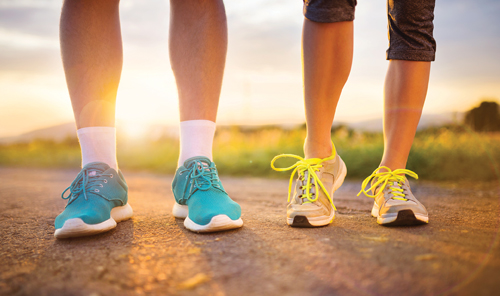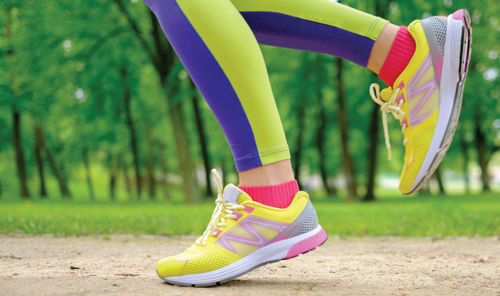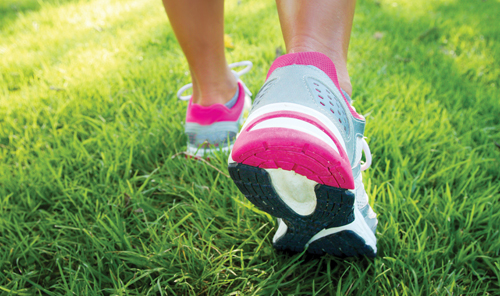By Shirin Mehdi
Athletic shoes are a must-have in everybody’s wardrobe. Choosing the right pair is just as important as working out. Wearing the wrong shoes can cause serious injury.
First, let’s look at some basics:
- Wear the same socks to try on shoes as you would while working out.
- Shop for shoes in the latter part of the day when your feet are the largest (they swell up in the evening).
- Have someone at the store help measure your feet so you can pick the right size. Your feet grow longer and wider as you age. Also, one foot is always smaller than the other.
- Shoes must feel comfortable as soon as you wear them, you cannot “break into” athletic shoes. Make sure you run or walk a short distance to get a sense of how comfortable they feel. If there is pressure on a certain part or they pinch and squeeze, let them go.
- You must have enough space to wriggle all your toes leaving enough space for your feet to move as you walk or run.
- Pick shoes that have a good grip on your heel so they don’t slip as you walk, run or jump.
- Examine every part of the shoe to ensure there are no seams or tags that irritate your feet.
- Check the grip of the soles on different surfaces. Your shoes must be sturdy
Now that we have our basics in place let’s look at how shoes differ for different activities:
Walking: Walking is the most basic low-impact workout. Choose Basic shoes with low cushioning. If you walk outdoors, look for shoes with medium tread, for indoor walks, a flat sole is more than enough. Walking shoes work well for indoor workouts too.

Running: If you run, pick shoes with adequate cushion. Also, wriggle your toes making sure there is at least one finger space on both sides because your feet swell up when you run. Running shoes need to have a heel raise (the heel must be higher than the toes to enable motion). If you’re serious, visit a shoe store who measures pronation and gait. Companies create shoes that cater to your specific stride.

Hiking: The right pair of shoes must have a thick sole and good tread. A bigger tread creates more stability on different terrains. Hiking shoes should also reach to your ankles to protect your feet from rocks and debris.

Outdoor Circuit Training: If your exercise routine includes swift changes in direction, you will need a pair of shoes that provides lateral support. Look for medium tread, flat soles that reach your ankle bone.
For flat feet, heel pain, arthritis of the lower limbs and pronation issues, look for sneakers with motion control. These shoes have an elevation in the middle that separates the heel from the forefoot.
For the perfect fit, visit a foot doctor or a shoe store who can measure things like gait, pronation, stride and arch. Based on the results, they’ll provide a list of shoes to fit your feet perfectly!



